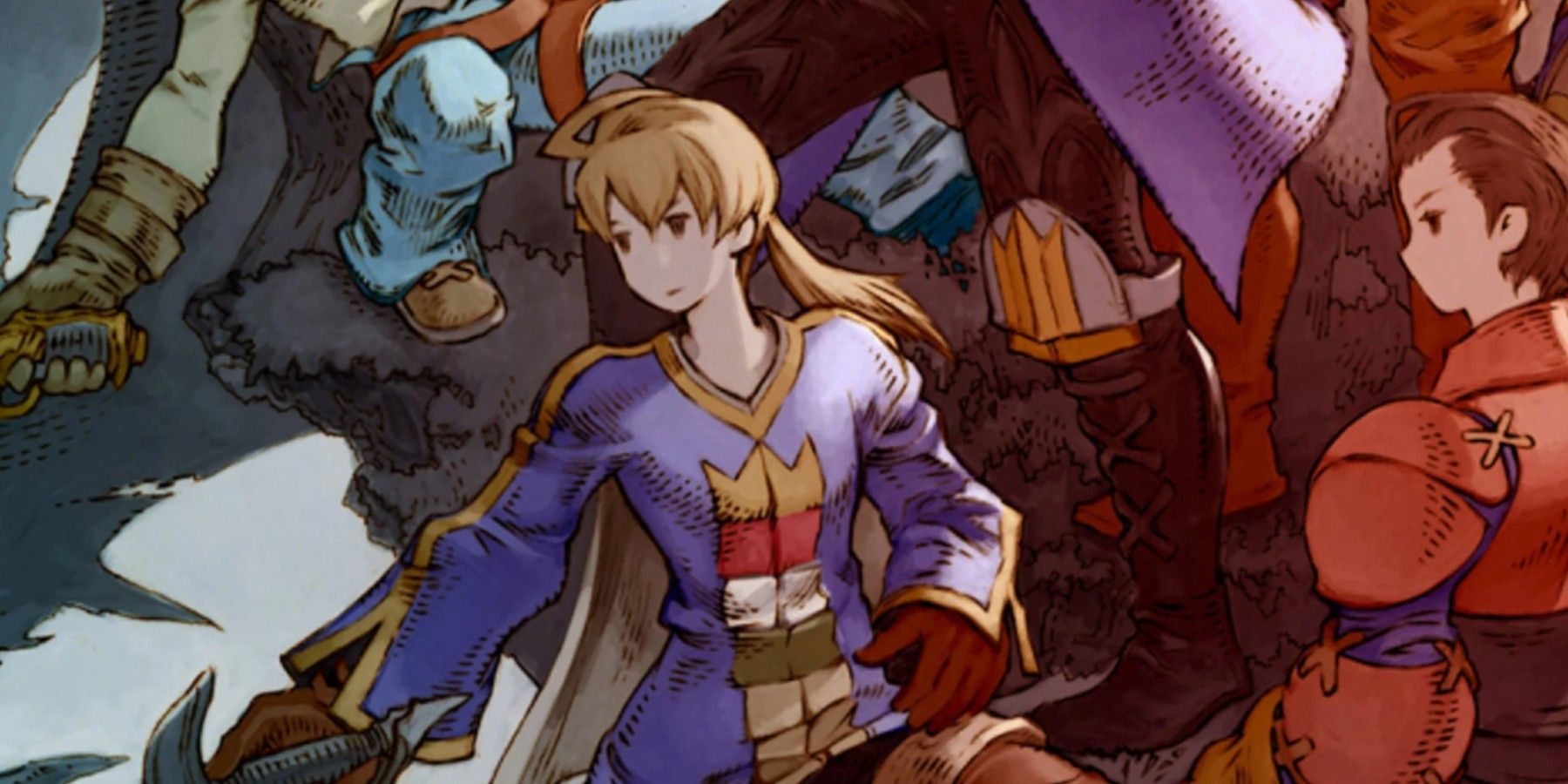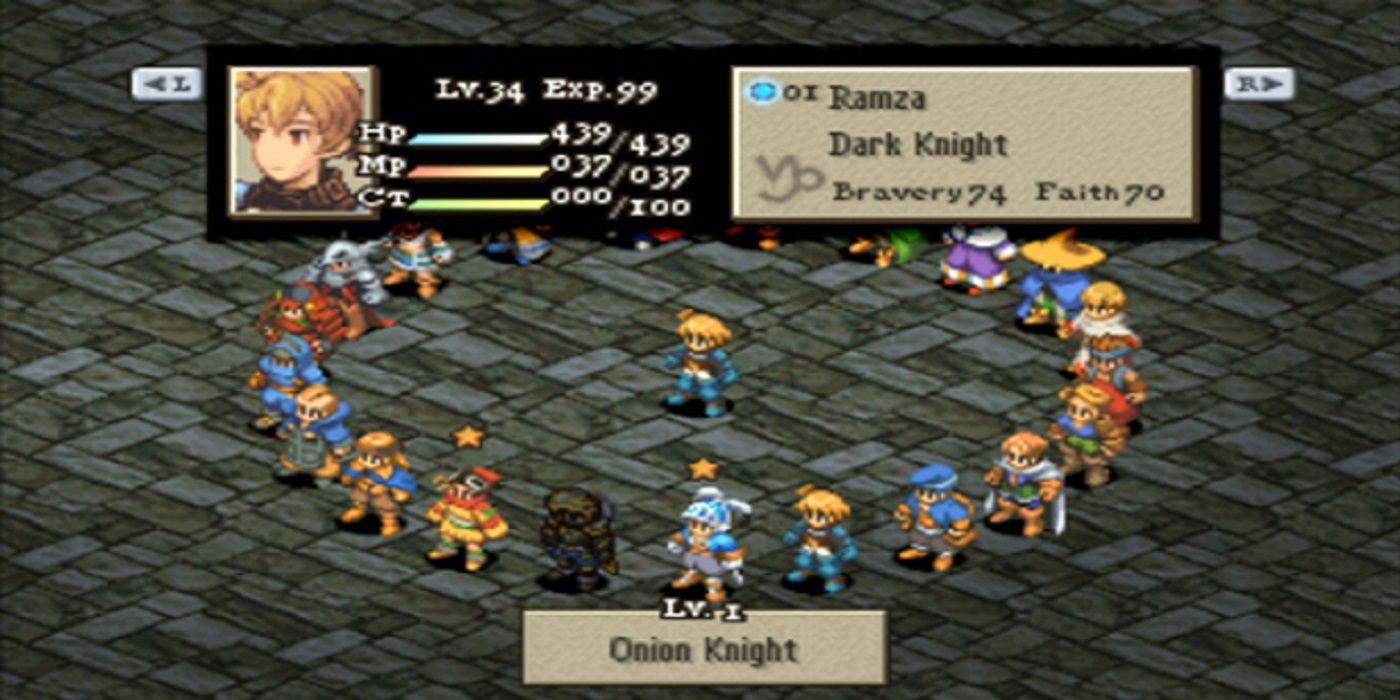RPG titles like Final Fantasy Tactics have long been inspired by the core concepts and mechanics largely pioneered by TTRPGs like Dungeons & Dragons. Final Fantasy in particular has utilized the mechanics behind D&D since its inception. The systems at work behind how magic, movement, and combat in most Final Fantasy games from before the transition to 3D are lifted almost completely from D&D. FF Tactics is an especially strong example of that design with its class system and grid-based movement. Fans of D&D would do well to check out (or replay) the PS1 classic even today.
With the excitement surrounding the upcoming spiritual successor Project Triangle Strategy, many fans are revisiting FF Tactics. This has led to an unexpected surge in players and streams on sites like Twitch for the more than two-decade-old game. Revisiting the classic can also serve as a great way to engage in very D&D style gameplay for those who enjoy the "crunchier" aspects of tabletop RPGs like Pathfinder or older editions of D&D. But Final Fantasy Tactics has a lot to offer fans of D&D in terms of exercising strategical combat muscles and has a lot of potential to inspire homebrew content for any home game.
Final Fantasy Tactics is Full of D&D DNA
The core of Final Fantasy Tactics' gameplay is pulled almost directly from a TTRPG battle system. Players command a team of customizable units spanning a multitude of classes and combat functions on a gridded map. Behind the scenes, rolls are made to determine initiative, accuracy, and damage. Speaking on the class system: Final Fantasy Tactics' Job mechanic has inspired many other games like Bravely Default 2 and is the biggest departure from D&D. In some ways, it does mirror the various subclasses available in TTRPGs, but with more flexibility. Units start with a roster of basic Jobs like Squire and Chemist except for main characters like Agrias and Count Orlandeu that have unique movesets. As those units progress through the Job system, they can learn more advanced ones like the Ninja or Geomancer that expand from the more traditional concepts.
The biggest change from TTRPGs in the Job system is the ability to change those Jobs at will, adding an extra layer of flexibility than its D&D roots. After that, the core of the gameplay remains incredibly similar. On each units' turn, they can move, take an action, and then have access to reaction abilities like Counter or Adrenaline Rush (which raises the units' base speed after an attack). This is almost identical to a standard turn in D&D, and setting up character placement to execute strategies feels very much like controlling a troop of PCs in battle. The magic in Final Fantasy Tactics also mirrors D&D's various schools of magic in many ways. Different types of magic like destructive Black Magic or manipulative Time Magic allows for the fine-tuning of character builds to achieve specific results in a battle.
Another small thing in FF Tactics that makes it feel very much like a D&D game is the way it handles the secret missions in the game. Players travel across an ever-increasing map that includes cities and towns that serve as hubs for trade and story encounters. In each town or city, players can visit the local taverns where they can pick up rumors about various goings on throughout the world or send underlings out for timed side quests. Much like finding the most powerful monsters in a D&D world can rely on following small plot threads dropped by the DM, exploring those side missions and rumors leads to most of the highest-level encounters and the different hidden characters. A good example is actually the guest character Cloud Strife from FF7. Players have to visit a specific town at a certain point, hear a specific rumor, then follow the line through until Cloud ultimately joins the party. Even his Materia Blade can only be found by using a very specific skill to search a map for the lost sword.
Many other elements are present in small measure that can feel very similar to D&D, like some conversation choices, but overall the similarities revolve around the combat and skill systems. Many fun D&D builds can come from fighters in FF Tactics, and its story is rife with elements that can be emulated to great effect in a tabletop game. All of these various mechanics coalesce to make Final Fantasy Tactics a game that any D&D fan would do well to check out.
Final Fantasy Tactics is available on Android and iOS.


